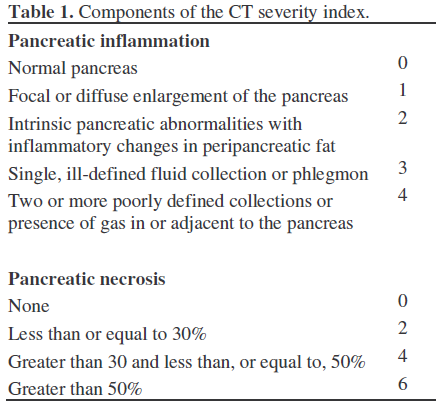- (2006) Volume 7, Issue 4
Jan J De Waele*, Stijn I Blot
Intensive Care Unit, Ghent University Hospital. Ghent, Belgium
Received: June 1st, 2006 Accepted: June 2nd, 2006
Diagnostic Imaging; Pancreas; Pancreatitis, Acute Necrotizing; Tomography, X-Ray Computed
Dear Sir:
We read with interest the paper by Gürleyik et al. [1] and the subsequent letter by Brestas and Dafni regarding the use of ROC curve analysis [2]. We fully agree with Dr. Brestas that ROC curve analysis should be used to report the true discriminative power of a test, and are impressed by the performance of the CT severity index in predicting severe disease which was reported in reply to this letter.
There is however another very important bias when using the CT severity index, as introduced by Balthazar et al. [3], to predict disease severity. When a test or score is used to predict a disease state, two crucial elements must be taken into account. Firstly, the disease state to be predicted is not (yet) present (otherwise it should not be a prognostic indicator), and secondly, the disease state to be predicted is not included in the score under study.
This is why the CT severity index has a critical defect. The presence of pancreatic necrosis is the most important component of the score (Table 1). But also in the Atlanta criteria, the presence of necrosis automatically puts the patients in the “severe disease” category. It is completely illogical to measure the presence of a complication on CT scan (necrosis in this case) and then state that by measuring the complication you could predict it. This is a self fulfilling prophecy, which clearly has no use in daily clinical practice.

This may explain the extremely high AUC as reported by Dr. Gürleyik et al. [1] and similar seemingly good correlations by others in the past [4, 5, 6, 7, 8].
From this, it is obvious that the CT severity index can be used to predict mortality, but as long as pancreatic necrosis is part of the criteria for disease severity, this score should not be used to predict disease severity as defined by the Atlanta criteria.